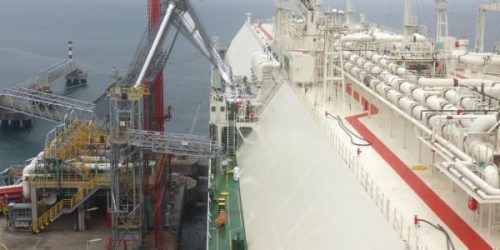Global natural gas demand is set to return to pre-crisis levels as early as this year and will continue to rise in the coming years, thanks to the coal-to-gas switch in Asia, particularly China. The growing gas demand will drive more liquefied natural gas (LNG) consumption and trade, and producers are gearing up for a new cycle of final investment decisions (FIDs) on projects.
The recent record-high LNG spot prices in Asia highlighted the more stable prices of the gas for LNG buyers in long-term supply contracts compared to the much higher volatility in spot prices. However, long-term supply is indexed to the inherently volatile oil prices.
The term supply contracts are set to underpin the additional LNG capacity the world will need this decade and could prompt a new wave of an investment super-cycle in LNG projects.
However, a possible new wave of strong investment in LNG could create a massive glut later this decade if most of the planned or proposed projects move forward, Rochelle Toplensky of The Wall Street Journal argues.
Qatar already moved to claim LNG supremacy, approving last week what it says would be the world’s largest LNG project in terms of capacity, and likely the largest oil and gas project in terms of value to get the green light this year.
More projects apart from Qatar’s mega plan will be needed to meet the growing LNG demand, analysts say. But they also warn that a renewed rush to sanctioning LNG projects would leave the market with a supply overhang by the end of this decade.
Around 104 million tons per annum (tpa) of new LNG supply will need to move forward over the next five years in order to meet the 580-million-ton global oil demand by 2030, Rystad Energy says.
However, the current proposed LNG capacity is ten times higher—at around 1 billion tpa. This proposed supply will be competing to secure buyers and attract investors, according to Rystad Energy.
“After a poor sanctioning year in 2020, we believe that the optimism is back in the market and that more final investment decisions for LNG projects will follow after Qatar’s NFE,” the consultancy said last week.
Related: Gas Companies “Hit the Jackpot” On Deep Freeze
However, new projects will need more careful planning than in the previous boom in the mid-2010s. First, they will have to compete for profitability with low-cost Qatari and Russian LNG projects. And secondly, buyers and investors will be increasingly looking at the environmental credentials of the LNG projects as many major developed economies, most of which are importers of LNG, have raised the bar for environmental standards as they pledge net-zero emission economies within three decades.
It’s not surprising, then, that when announcing the major North Field project expansion, Qatar Petroleum also boasted plans for a CO2 capture and sequestration (CCS) system as part of the project and said the project would recover 75 percent of the plant’s tertiary water, conserving 10.7 million cubic meters of water per year.
“Qatar’s decision to construct a carbon capture and storage facility, as well as additional environmental investments, shows that LNG suppliers are increasingly putting focus on ways that they can mitigate their carbon emissions,” said Wood Mackenzie research director Giles Farrer.
“Policy makers will need to provide clarity on decarbonisation plans, including how they see the role of natural gas, following pledges to achieve climate neutrality,” Wood Mackenzie vice president Massimo Di Odoardo says, noting that “Decarbonising natural gas will become a strategic priority for the gas industry.”
According to Katan Hirachand, managing director at Societe Generale Corporate & Investment Banking, lenders will look at the emissions profile of projects before committing to financing new LNG supply.
“It is not black and white. Certain projects will go ahead and some will not,” Hirachand said at the online European Gas Conference last month, as carried by Reuters.
New LNG projects will be sanctioned this decade after the shock in 2020 put many investments on hold. But those new facilities will have to not only compete with the low-cost high-volume Qatari gas, but also to show emission mitigation efforts in order to win the backing of investors and buyers.





